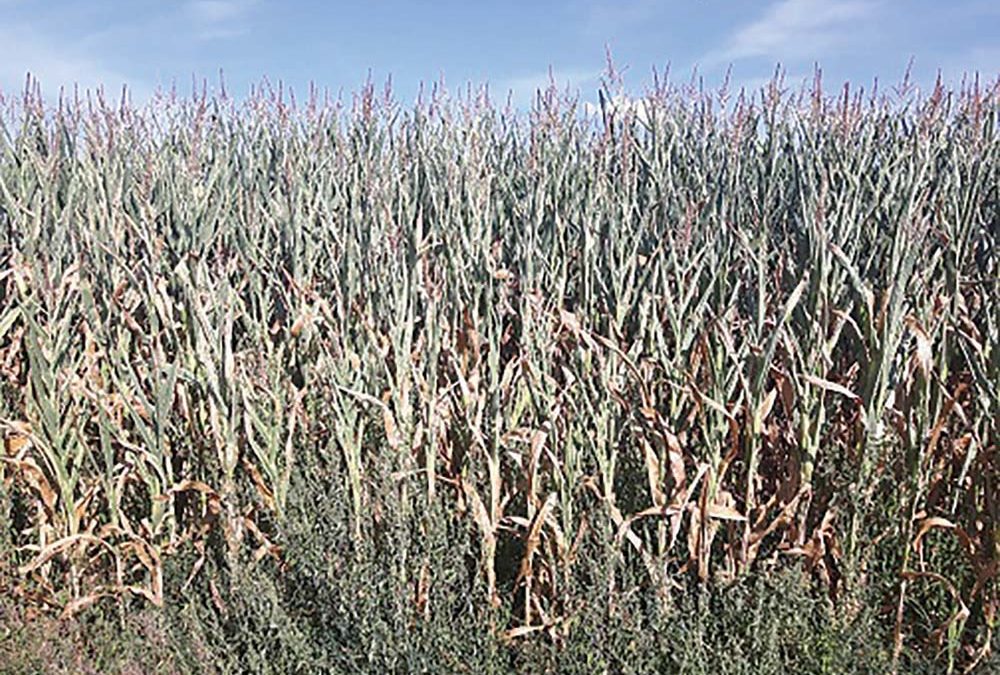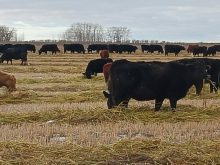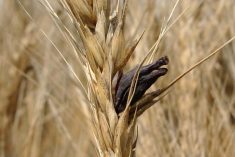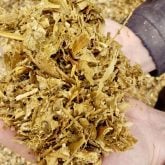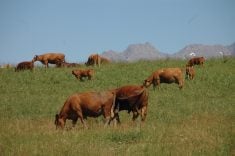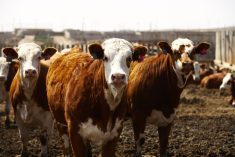Much of this year’s corn crop across the southern Prairies has been once again hit by drought.
My photograph of a southern Manitoba cornfield in mid-August shows one of the worst cornfields I have ever seen. It tasselled out early with curled grey leaves and no visible cobs on its stalk. Most whole plants were half-parched from the ground up. Oddly enough, I found another field about five kilometres down the road which was also drought-stressed, but was green and had small cobs. Both cornfields are a good testament that silage samples should be collected and tested.
Read Also

Cancer agency reclassifies another herbicide ‘probably carcinogenic’
The WHO’s cancer research agency has now put atrazine, a herbicide well known to corn growers, in the same potential-hazard category where the agency put glyphosate.
Dairy producers should take several samples of chopped whole-corn plants during harvest. Chopped samples from before and after ensiling can be tested for moisture content using a microwave oven or commercial moisture tester. Subsequent ensiled samples should be sent to an accredited lab for a nitrate test, mould and mycotoxin analysis and a complete nutrient profile. Once received, results can be reviewed to assure forage safety (nitrate, mould/mycotoxin) for being fed to dairy cattle, and that any compromised nutrient values (including moisture content) are adjusted in their diets.
Testing is critical
As a dairy nutritionist, I believe a nitrate test is the most valuable test when feeding drought-stricken silage to dairy cows and other livestock. I have known a few dairy producers who accidentally fatally poisoned young dairy stock with nitrates. They failed to test silage for it.
When dairy producers receive their nitrate results, they should compare them with guidelines shown in the table to establish the degree of animal safety of their corn silage. They should also take into account extenuating factors (age of cow, stage of pregnancy and health status) which determine the final amount of nitrate-contaminated corn silage that can be fed safely.
In addition to a nitrate test, I recommend corn silage samples be tested for mould counts and a mycotoxin screen. We might want to do a specific test for aflatoxins (or the root fungus, Aspergillus flavis). Even though it is rare in western Canadian crops, it may show up since it flourishes in weather that is hot and sunny, warm at night, and dry during the corn silk and fill stages — weather that was typical to us this summer.
When ingested by dairy cattle, aflatoxins greater than 500 ppb in corn silage (dm basis) cause a host of serious health and metabolic problems. Such symptoms include reduced feed, dry matter intake and feed efficiency, leading to reduced milk production, increased liver and other organ damage, failure to process dietary nutrients, impaired immune function, reproductive failure, infertility and even abortions.
Compared to tests for nitrate and mould/mycotoxin field tests, moisture poses no threat to the dairy cows, but in failure to send away those “before” ensiling samples we might miss the best opportunity to store drought silage in its best possible condition. For example, optimum corn silage fermentation occurs when the whole plant is between 65 to 70 per cent moisture. This is the moisture “gold” standard for making corn silage in horizontal bags and bunker silos, with a slightly drier allowance in tall tower silos.
Ensiling this dry corn silage of less than 60 per cent moisture might not allow it to be packed tight enough and exclude most air to be fermented and well-preserved. That can result in undesirable organisms such as blue penicillin moulds to thrive under such low oxygen levels and limited moisture, which creates unpalatable poor corn silage coming out of the opened bunker.
Similarly, drought corn silage samples should be routinely taken and tested for any compromised nutritional values, especially once the silo, bunker or bags go through the complete 21-day fermentation process. Results from these tests (Nel, protein, ADIN and starch levels) can be very useful in taking corrective action when implementing new drought corn silage into the reformulated dairy diet.
In any case, dealing with the challenges of drought corn silage is just the norm this year across Western Canada. The key to effectively using it in dairy diets is to test it for moisture, nitrates, moulds and mycotoxins and its actual nutrient value. Afterward, we can treat it as straightforward forage, which is not really different than normal corn silage.


